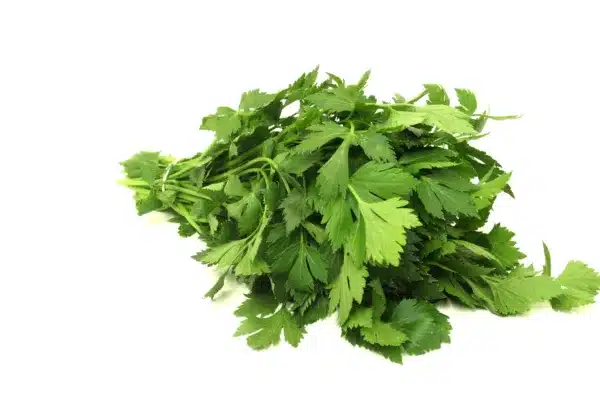Chervil-Nutritional Bounty. A Closer Look at the Vitamins, Minerals, and Antioxidants in this Flavorful Herb
Meaning of Chervil in Hindi is : चेवील, केरविल, आतरीलाल & in Tamil I could not find out
Hello Bharat - It is not Kothai Malli or Dhaniya Patha but some what nearer to it mostly used in French cusine.
Table of Contents
Definition & Origin
Chervil (Anthriscus cerefolium) is a delicate, aromatic herb that belongs to the Apiaceae family, which also includes parsley, dill, and cilantro. It is commonly used in culinary applications to add a subtle, mild anise-like flavor to dishes. It has finely divided, fern-like leaves that are bright green in color and a slender, upright growth habit. The plant is native to regions of southern Russia, the Caucasus, and parts of Western Asia.
In cooking, it is often considered one of the fines herbes, a traditional French herb blend that also includes parsley, tarragon, and chives. It is particularly popular in French cuisine and is used to enhance the flavor of salads, soups, sauces, and various dishes. Chervil is best when used fresh, as its flavor diminishes when dried.
Apart from its culinary uses, chervil has been historically associated with various medicinal properties, though it is not as widely used for medicinal purposes as it once was. It is worth noting that chervil should not be confused with similar-looking plants such as hemlock, which is toxic. Care should be taken to correctly identify and use chervil in culinary and herbal applications.
Chervil (Anthriscus cerefolium) is believed to have originated in regions of southern Russia, the Caucasus, and parts of Western Asia. It has a long history of culinary use, particularly in European cuisine, with records suggesting its cultivation dating back to ancient times. It gained popularity in medieval European monasteries and later became a staple in French cuisine, often included in herb blends like fines herbes.
Over time, it has spread to various parts of the world and is now cultivated in many regions with suitable climates. Its delicate, aromatic leaves make it a valued herb in kitchens globally, where it is used to impart a mild, anise-like flavor to a variety of dishes.

Chervil's Nutritious Punch: A Bite-Sized Breakdown
Chervil, the delicate herb with a licorice-like whisper, packs a surprising punch when it comes to nutrients. Here’s a sneak peek into its goodness:
Vitamins:
Vitamin C: This immune champion supports collagen production and keeps your skin glowing. Just one tablespoon of chopped chervil delivers about 8% of your daily recommended intake.
Vitamin A: Essential for vision, cell growth, and immune function, chervil offers a modest boost to your daily needs.
Vitamin K: This superhero plays a vital role in blood clotting and bone health. One tablespoon provides a whopping 15% of your daily recommended intake.
Folate: Crucial for cell division and DNA synthesis, chervil provides a small but valuable amount, especially beneficial for pregnant women and individuals with anemia.
Minerals:
Potassium: This heart-friendly mineral regulates blood pressure and keeps your muscles happy. Chervil is a good source, contributing to overall electrolyte balance.
Manganese: Important for enzyme function, metabolism, and antioxidant defenses, chervil offers a small but helpful dose.
Iron: This oxygen-carrying essential helps prevent anemia. It is a good source, especially valuable for those prone to iron deficiency.
Calcium: While not a champion source, chervil still contributes to strong bones and teeth.
Other Nutrients:
Dietary Fiber: Aiding digestion and gut health, chervil offers a small yet beneficial amount.
Antioxidants: These defenders against free radicals potentially reduce the risk of chronic diseases. It boasts various antioxidants, including flavonoids and vitamin C.
Remember, while it is a nutritious friend, enjoy it as part of a balanced diet for optimal health. Consult a healthcare professional if you have any concerns about incorporating chervil into your diet, especially if you have underlying health conditions.

Health benefits
Chervil, aside from being a flavorful herb in culinary applications, offers some potential health benefits.
Rich in Antioxidants: It contains antioxidants, such as flavonoids, which help combat oxidative stress in the body.
Vitamin A for Vision and Skin Health: Our eye sight and immune system will be strong as it is a source of beta-carotene, a precursor to vitamin A.
Vitamin C Boost: It provides a dose of vitamin C, an antioxidant that supports the immune system, aids in collagen production for skin health, and enhances the absorption of non-heme iron from plant-based foods.
Bone Health with Vitamin K: The presence of vitamin K in its leaves contributes to bone health and blood clotting. It is an important nutrient for maintaining strong and healthy bones.
Iron Content for Anemia Prevention: Chervil contains iron, a vital component of hemoglobin. Including this in your diet can contribute to the prevention of iron-deficiency anemia and support oxygen transport in the blood.
Magnesium Support: Chervil contains magnesium, an essential mineral that plays a role in muscle and nerve function, blood glucose control, and bone health.
Potassium for Heart Health: The potassium content in chervil supports heart health by aiding in maintaining proper heart rhythm, muscle contractions, and fluid balance in the body.
It’s important to note that while chervil contributes to these health benefits, it is usually consumed in small amounts as an herb in various dishes. A balanced and varied diet remains crucial for overall health and well-being. Additionally, individual health conditions and dietary requirements may vary, so it’s advisable to consult with a healthcare professional or nutritionist for personalized advice.
